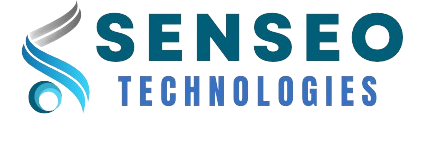Your basket is currently empty!

Bridging the AI Skill Gap: A Call to Empower the Workforce
According to a 2023 McKinsey report, AI could potentially deliver additional global economic activity of around $13 trillion by 2030. McKinsey also reported a staggering trend: over 60% of global companies are integrating AI-driven technologies into their operations. This rapid adoption is transforming industries, streamlining operations, and unlocking new opportunities. However, beneath this wave of innovation lies a pressing challenge—fewer than 25% of employees feel adequately equipped to leverage these technologies effectively.
Adopting AI isn’t just a trend; it’s becoming essential for businesses to stay competitive. But if employees aren’t ready to use these tools, we’re looking at some serious issues. This gap is more than just a skills mismatch. It’s a ticking time bomb that could lead to inefficiencies, missed opportunities, and ethical missteps. As organisations embrace AI to stay competitive, the workforce’s readiness becomes a critical factor in determining whether AI initiatives succeed or falter.
The Risks of an Unequipped Workforce
When employees lack the necessary knowledge and skills to use AI tools effectively, organisations risk several setbacks:
1. Inefficiencies: AI tools promise speed and precision, but improper use can lead to bottlenecks, errors, or reliance on outdated processes. This struggling with AI tools can slow things down even more making work more less effective.
2. Missed Opportunities: Without understanding AI’s full potential, employees may overlook innovative solutions or fail to implement strategies that drive growth and innovation by missing out on its benefits like better data analysis and automated processes.
3. Ethical Missteps: AI comes with complex ethical considerations. Inadequate training can result in biased decision-making, data privacy violations, or other compliance issues.
The Path Forward: Building AI Literacy
To address this gap, organisations must prioritise AI literacy across all levels. Here’s how:
- Comprehensive Training Programs: Equip employees with a robust AI understanding that goes beyond surface-level workshops. Focus on practical, hands-on experience that demystifies AI, how it works, its benefits, and its limitations and builds genuine competence.
- Tailored Skill Development: Focus on role-specific AI applications, ensuring employees at all levels from new hires to senior managers can integrate AI tools into their daily tasks seamlessly.
- Fostering an AI-Ready Culture: Create an environment where continuous learning is encouraged, and employees feel empowered to experiment with AI solutions. AI is always evolving, so staying updated is key. Offer access to online courses, workshops, and seminars.
- Team Collaboration: Get different departments working together. Sharing knowledge and best practices can give everyone a better understanding of AI.
- Ethical AI Practices: Educate employees on ethical considerations, emphasising transparency, fairness, and accountability in AI-driven processes. Set clear rules for using AI responsibly. This includes protecting data privacy and avoiding bias. Educating employees on these guidelines can prevent ethical issues.
- Leadership Support: Make sure leaders are on board with the AI transformation. Their support is crucial for driving change and providing the resources needed for training.
The Human-AI Collaboration Model
The goal isn’t to replace human workers but to augment their capabilities. AI should be viewed as a collaborative partner that:
- Handles repetitive, data-intensive tasks
- Provides insights for more informed decision-making
- Frees humans to focus on creative, strategic, and emotionally intelligent work
Why Investing in AI Literacy Matters
Closing the AI skill gap isn’t just a matter of improving productivity—it’s about securing a competitive edge and fostering a resilient organisation. Employees who are confident in using AI tools are better equipped to:
– Innovate and solve complex problems
– Adapt to changing market demands
– Navigate ethical challenges with informed decisions
Moreover, empowered employees drive engagement and satisfaction, creating a ripple effect that strengthens organisational culture.
Education and Policy Matter Too
It’s not just up to companies. Schools and policymakers have a big role to play too. Integrating AI education into curricula can prepare the next generation for an AI-driven world. And policies that support lifelong learning can help people keep upskilling.
A Call to Action
This is a critical moment for organisational leadership. The AI skills gap is more than a technological challenge—it’s a strategic imperative.
Invest in your most valuable asset: your people. Create learning ecosystems that empower employees to become AI-literate and to develop the skills needed to thrive in an AI-enhanced workplace. View this investment not as an expense, but as a critical strategy for future-proofing your organisation.
The future of work is undeniably AI-driven. The most successful companies won’t just adopt AI—they’ll create workforces that can effectively leverage AI’s full potential. The question is, are your employees ready to thrive in it?
Are you leading initiatives to bridge the AI skills gap in your organisation? I’d love to hear your strategies and challenges in the comments below.
To learn more and register for our upcoming AI-Powered Strategic Planning visit AI-Powered Strategic Planning Workshop | Senseo Technologies

Leave a Reply
You must be logged in to post a comment.